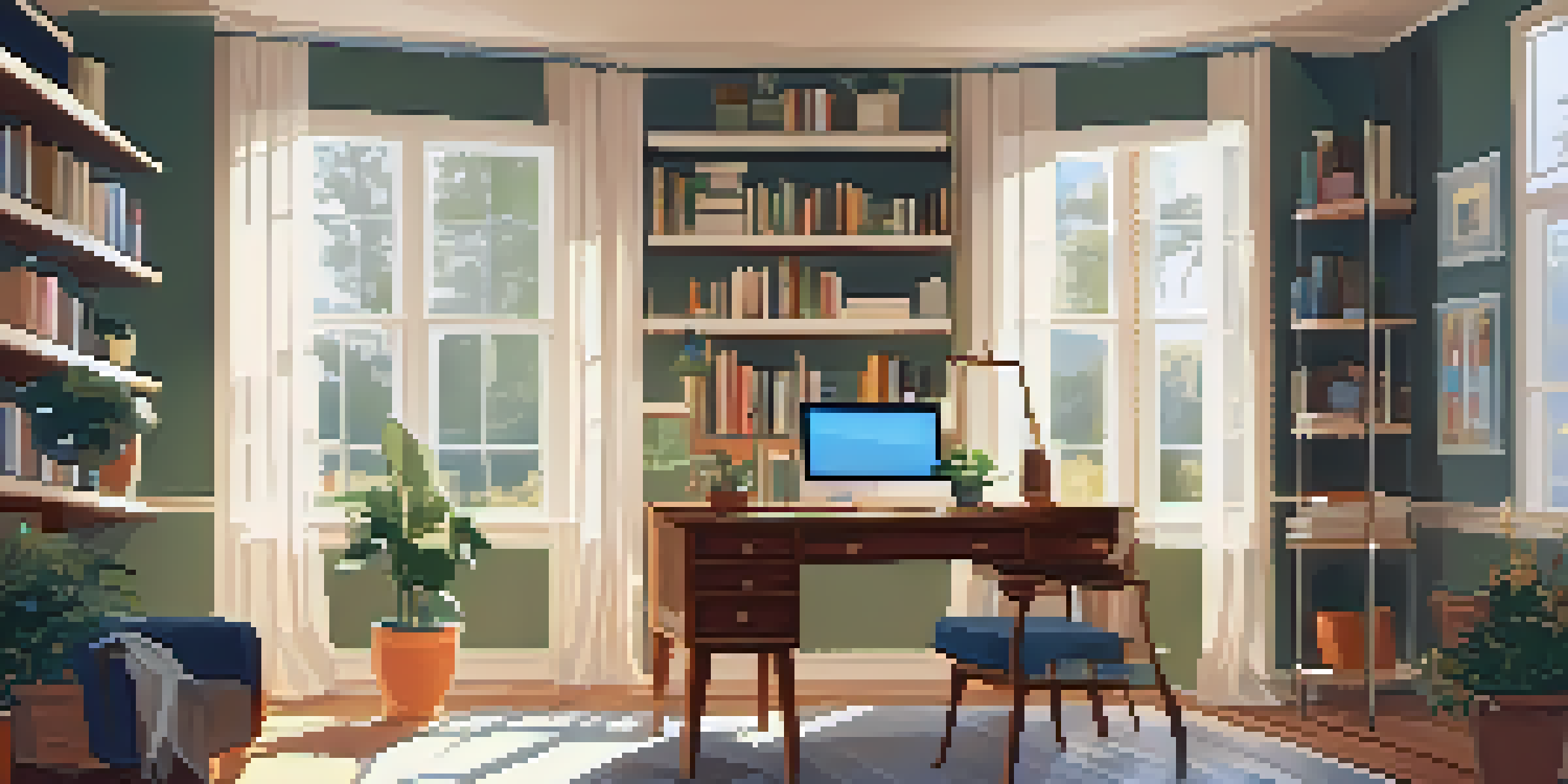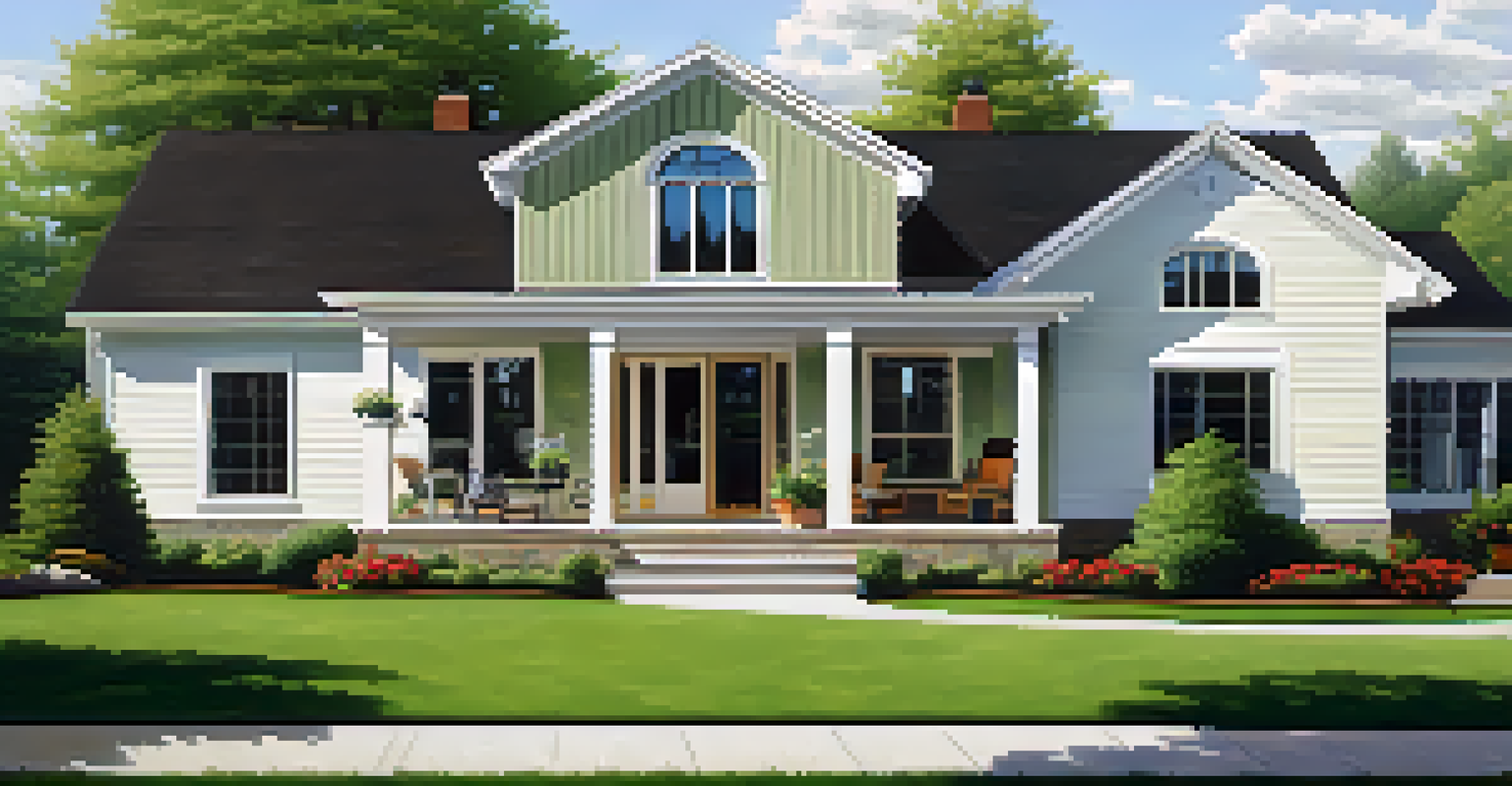Home Office Requirements: Changing Housing Market Dynamics

The Rise of Remote Work and Its Impact on Housing Needs
In recent years, remote work has surged in popularity, prompting many to reconsider their living situations. This shift has led to a growing demand for homes that accommodate a home office setup, reflecting a fundamental change in housing preferences. As more individuals and families embrace the flexibility of working from home, the need for dedicated workspace has become a priority when house hunting.
Remote work is not just a trend; it's a fundamental shift in how we approach work and life.
Homebuyers are increasingly looking for properties that offer extra rooms or flexible spaces that can easily be transformed into an office. Features such as natural lighting, soundproofing, and proximity to high-speed internet have become essential criteria. This trend is reshaping the housing market, with many sellers now highlighting these aspects to attract potential buyers.
Moreover, the rise of remote work has enabled people to move away from urban centers, seeking homes in suburban or rural areas. This shift not only impacts housing demand in these regions but also contributes to changing price dynamics, with some areas experiencing a surge in home values as remote workers seek more space and a better quality of life.
Evolving Home Office Features Buyers Seek Today
As remote work becomes more entrenched in our daily lives, specific features are now deemed essential for a productive home office. High-speed internet connectivity is at the top of the list, as a slow connection can hinder productivity and lead to frustration. Additionally, buyers are looking for homes with built-in technology solutions, such as smart home systems that facilitate work-life balance.

Natural light and ventilation are also crucial for a conducive work environment. Homebuyers often favor spaces with large windows or rooms that are well-positioned to receive sunlight throughout the day. This not only enhances the ambiance but also helps to improve mood and productivity, making it a sought-after feature during the home-buying process.
Remote Work Drives Housing Demand
The rise of remote work is reshaping housing preferences, with buyers seeking homes that accommodate dedicated office spaces.
Lastly, soundproofing is becoming increasingly important as more individuals work from home. Buyers are now considering noise levels in their potential homes, wanting quiet spaces free from distractions. This demand for tranquility is driving developers to incorporate soundproofing materials and designs in new constructions, further influencing market trends.
The Shift in Location Preferences Among Homebuyers
With the rise of remote work, many homebuyers are reevaluating their location preferences. The traditional allure of urban living is waning as individuals seek homes in quieter, less densely populated areas. This newfound flexibility allows people to choose locations based on personal lifestyle preferences rather than proximity to their workplaces.
The home office is no longer just a luxury; it's a necessity for modern living.
Suburban and rural areas are witnessing a boom in demand as buyers are attracted to larger homes with more outdoor space. Families are particularly drawn to these regions, where they can enjoy a more relaxed pace of life while still maintaining access to urban amenities. This trend has significantly altered the landscape of the housing market, leading to increased competition in these previously overlooked areas.
Real estate agents are adapting to this shift by focusing on properties that cater to these evolving preferences. They are highlighting features like spacious yards, community amenities, and local schools, all of which can enhance the quality of life for families making the move. This change not only reflects the desires of homebuyers but also illustrates the long-term impacts of remote work on housing dynamics.
Home Design Trends Driven by Remote Work Needs
As the demand for home offices rises, so too does the evolution of home design trends. Homeowners are increasingly opting for open floor plans that allow for flexibility in how spaces are used. This design philosophy supports the notion that rooms can serve multiple purposes, adapting to the needs of remote workers.
Additionally, many are investing in soundproof solutions, such as acoustic panels and heavy curtains, to create a more focused work environment. This trend reflects an understanding that a productive workspace is essential for remote work success. Homeowners are also opting for ergonomic furniture that promotes comfort during long hours of work.
Location Preferences Are Shifting
As remote work becomes more common, many homebuyers are moving to suburban and rural areas for larger homes and a quieter lifestyle.
Furthermore, the incorporation of greenery and biophilic design elements is becoming popular, as they contribute to a calming atmosphere. Plants not only enhance the aesthetic appeal but also improve air quality and mental well-being, making them a smart addition to any home office. This shift in design reflects a holistic approach to creating a functional and pleasant workspace.
The Role of Technology in Home Office Setups
Technology plays a pivotal role in enhancing home office setups, ensuring that remote workers remain connected and productive. High-speed internet is a non-negotiable feature for most homebuyers, as it facilitates seamless communication and collaboration with colleagues. Many are investing in advanced networking solutions, such as mesh Wi-Fi systems, to ensure coverage throughout their homes.
Beyond connectivity, the demand for smart technology is also on the rise. Devices like smart speakers, video conferencing tools, and automated lighting systems help create a more efficient working environment. These technologies not only streamline daily tasks but also contribute to a more comfortable workspace.
Moreover, home office setups are increasingly incorporating cybersecurity measures, as working from home can expose individuals to various online threats. Homebuyers are becoming more conscious of the need for secure networks and the use of VPNs (Virtual Private Networks) to protect sensitive information. This focus on technology ensures that remote work can be conducted safely and effectively.
The Impact of Remote Work on Housing Prices
The shift towards remote work is having a significant impact on housing prices across various regions. As demand for homes with dedicated office spaces rises, certain markets are experiencing price surges. Suburban and rural areas, in particular, are seeing increased competition, leading to bidding wars that drive up property values.
Conversely, urban markets may experience a cooling trend as some individuals choose to leave city living behind. This shift could potentially lead to a rebalancing of housing prices, with some urban properties facing depreciation. Buyers are now weighing the pros and cons of city life against the benefits of more space and tranquility in suburban or rural areas.
Technology Enhances Home Workspaces
High-speed internet and smart technology are now essential features in home office setups, improving productivity and connectivity.
Real estate analysts are closely monitoring these trends, as they could signal long-term changes in the housing market. The rise of remote work is not merely a temporary shift; it may redefine how we approach homeownership and the value placed on different geographic locations.
Future Predictions for Home Office Trends in Real Estate
Looking ahead, the influence of remote work on the housing market is expected to continue evolving. Real estate experts predict that the demand for homes with dedicated office spaces will remain strong, even as more companies adopt hybrid work models. This trend suggests that homebuyers will prioritize flexibility and functionality in their search for new properties.
Furthermore, as technology continues to advance, we can expect to see even more innovative home office solutions emerging. Features like integrated virtual reality workspaces and smart home automation are likely to become more commonplace, enhancing the remote work experience. This technological integration will further blur the lines between home and office.

Ultimately, the changing housing market dynamics driven by remote work are here to stay. As more individuals embrace the idea of working from anywhere, the implications for home design, location preferences, and pricing will shape the future of real estate in profound ways.